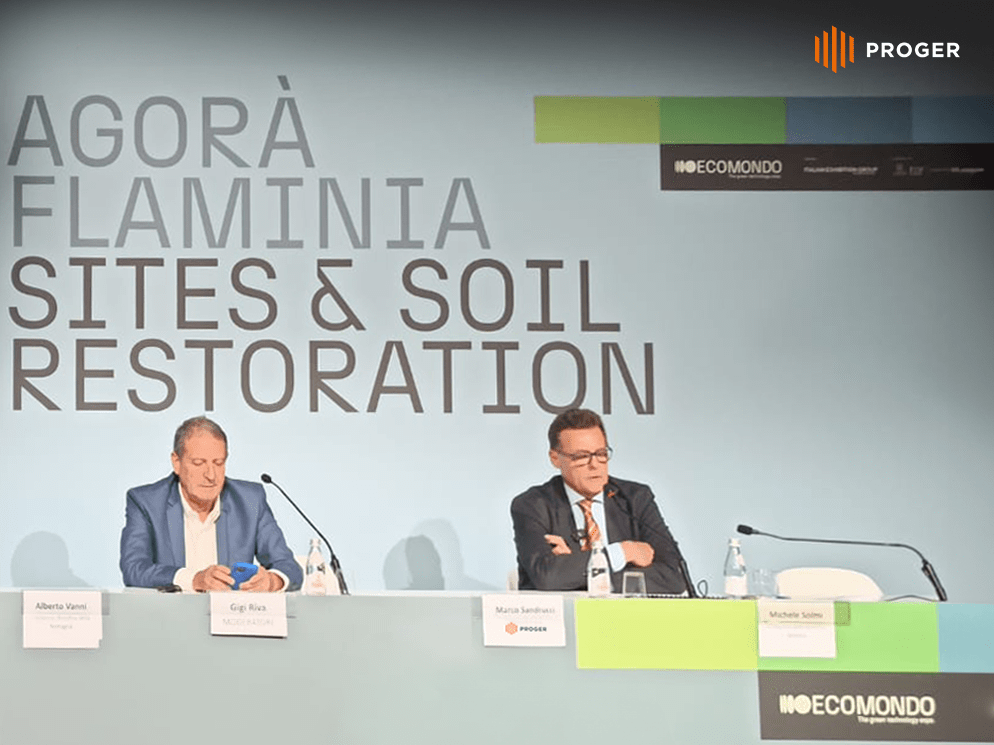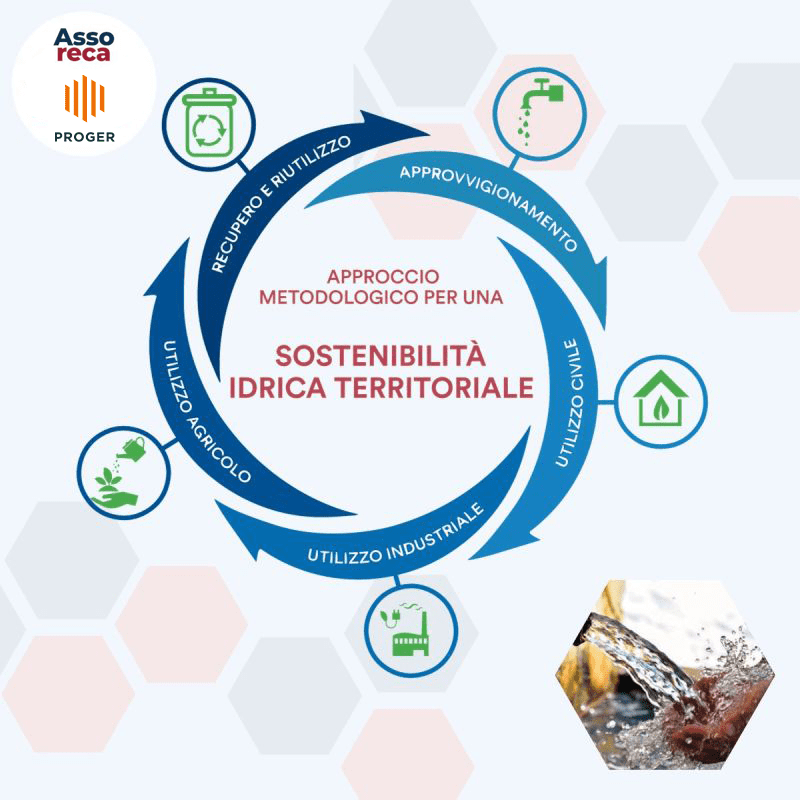Proger presents a new methodological approach to water sustainability at Ecomondo
Guidelines and pilot project implemented by the Assoreca working group coordinated by Proger

In the context of Ecomondo 2023, PROGER presented the guidelines for a new methodological approach to water sustainability and the related pilot project, developed by the ASSORECA Association working group coordinated by Proger and made up of Aecom, Anthemis, ERM, GM Ambiente, Gruppo Stante, Italferr, Sinergeo, Sodai and WSP.
As part of the programme of the international reference event in the green and circular economy sector, Marco Sandrucci, head of Proger’s Environment Operating Unit and coordinator of Assoreca’s ‘Water Sustainability’ working group, explained the need for a change in approach, both technical and cultural, in the way water resources are used at territorial level. This is an operational and managerial response to the ongoing climate change, the effects of which our country is increasingly experiencing, and is part of an infrastructural and legislative framework in need of profound renewal, as also highlighted in the “Water Economy in Italy” report published by Proger at the beginning of 2023.

“Today, the total amount of water present in a given territory is divided competitively between the different categories of use: civil and drinking, agricultural and livestock, industrial and hydroelectric,” explains Sandrucci, “When the available flow rates become insufficient, this leads to the reduction, and sometimes cancellation, of the supply to one or more of these categories”.
Pending complex, costly and time-consuming processes to increase supplies and reduce losses, Proger’s proposal is for a circular and efficient water management, pursuing a multiple and synergic utilisation that maximises the ‘cascading’ use of water, replacing the current competitive use between different types of use and utilisation.
“To highlight the real feasibility of the proposal, the working group developed the pilot project of a territorial compartment with high water resilience and sustainability,” Sandrucci continues, “To this end, an area was selected that can guarantee the coexistence of all types of water needs, considered exemplary as a case study, to demonstrate a new virtuous circular model, replicable in different socio-economic and territorial contexts, which tends to be all the more important as water scarcity phenomena become more accentuated in the near future”.